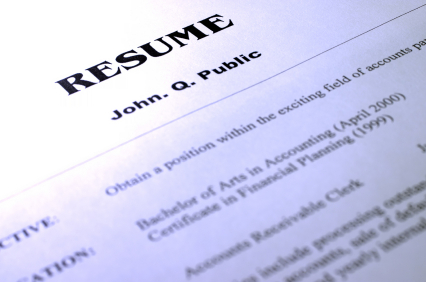March 9, 2010 · For Employees
I saw some research not too long ago which showed that only one interview is granted for every 200 resumes received by the average employer. The article also stated that your resume will be quickly scanned rather than read. Ten to 20 seconds is all the time you have to persuade a prospective employer to read further. Below are a few steps in creating a great resume: 1. Focus on the employer’s needs, not yours 2. Ask yourself, “What does the employer really want?” Investigate exactly what the company is looking for in an ideal candidate (check the want ads, talk with someone in personnel or HR). 3. Ask, “What would set a truly exceptional candidate apart from just a good one?” 4. Look for the connections between what you have done and what the employer is looking for. 5. Make statements in the first paragraph about your abilities, qualities, and achievements (The Objective section). 6. Back up those statements with an evidence section where you actually back up what you said you did (The Body of the resume). 7. Use power words throughout your resume like “achieved, delivered, tackled, excellent, proficient, proven, successful, consistent” just to name a few. Remember, your resume is an ad. You hope it will have the same effect as a well-written ad in a magazine or on television: getting the person looking at it to respond.
 I saw some research not too long ago which showed that only one interview is granted for every 200 resumes received by the average employer. The article also stated that your resume will be quickly scanned rather than read. Ten to 20 seconds is all the time you have to persuade a prospective employer to read further. Below are a few steps in creating a great resume:
I saw some research not too long ago which showed that only one interview is granted for every 200 resumes received by the average employer. The article also stated that your resume will be quickly scanned rather than read. Ten to 20 seconds is all the time you have to persuade a prospective employer to read further. Below are a few steps in creating a great resume:
- Focus on the employer’s needs, not yours
- Ask yourself, “What does the employer really want?” Investigate exactly what the company is looking for in an ideal candidate (check the want ads, talk with someone in personnel or HR).
- Ask, “What would set a truly exceptional candidate apart from just a good one?”
- Look for the connections between what you have done and what the employer is looking for.
- Make statements in the first paragraph about your abilities, qualities, and achievements (The Objective section).
- Back up those statements with an evidence section where you actually back up what you said you did (The Body of the resume).
- Use power words throughout your resume like “achieved, delivered, tackled, excellent, proficient, proven, successful, consistent” just to name a few. Remember, your resume is an ad. You hope it will have the same effect as a well-written ad in a magazine or on television: getting the person looking at it to respond.
No Comments Yet
You can be the first to comment!

Leave a comment